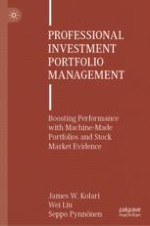2023 | OriginalPaper | Buchkapitel
2. General Equilibrium Asset Pricing Models
verfasst von : James W. Kolari, Wei Liu, Seppo Pynnönen
Erschienen in: Professional Investment Portfolio Management
Verlag: Springer Nature Switzerland
Aktivieren Sie unsere intelligente Suche, um passende Fachinhalte oder Patente zu finden.
Wählen Sie Textabschnitte aus um mit Künstlicher Intelligenz passenden Patente zu finden. powered by
Markieren Sie Textabschnitte, um KI-gestützt weitere passende Inhalte zu finden. powered by
